Tire plugging is the fastest method to repair a punctured car. Tire plugging uses a cord to prevent the airhead from escaping. If you are an experienced person, you can avoid damage to your car with simple tips.
So, how long does a tire plug last? Most manufacturers say that plug versions can last 7-10 years if installed correctly.
Yet, this number is meant as a reference because you can’t always fix it perfectly. The article gathers useful knowledge and some of the most frequently asked questions about tire plugs. Let’s scroll down to read more information!
Buy Best Tire Repair Kits at Amazon.com
What Is A Tire Plug?It is the primary tool in the repair by plugging method. From the outside, it looks like a standard wire, and the structure is quite remarkable; it is a sticky object; depending on the case, the item can expand or contract to match the size of the hole.
Its working principle is also quite simple: after being inserted into the tire, the plug wire will sense the pressure, determine the shape of the wound, and then automatically expand to adapt.
In addition, the material that makes the wire must be guaranteed to meet the standards, confirming the certainty so that after the air is pumped in, there will be no problems.
There is no denying the convenience that the plug method brings, and you can even repair it without removing the tire from the rim. You can even plug in the tire in some exceptional cases, even when the wheels are connected.
How Long Does A Tire Plug Last?When a vehicle is repaired correctly and maintained, a plug’s life span can last up to 7-10 years. It is an unbelievable number for a wheel that has been repairable.
However, manufacturers advise users not to overdo patching like this in practice. When using too many repair measures, the impact will affect the inherent functions, causing deflation and explosion.
When traveling on the road, the car’s wheels have problems, do not rush to decide when the experience is not proficient; the best way is to take the car to a repair center to have expert advice on the appropriate repair method.
Is Plugging A Tire A Good Idea?Buy Best Tire Repair Kits at Amazon.com
Plugging or patching is only a temporary measure before you have enough time to change into a new tire. The life of a tire after plugging can last from 7-10 years or 25,000 miles; no one can be sure that there will not be any problems.
Plugging in tires will be a good idea, even effective if the wheel is in an emergency that needs to be moved.
Is It Safe To Plug In A Tire?You can safely use your plugged-in tires when traveling in a specific section of the road. Unlike a spare tire, which has a short life, it is possible to prevent air from escaping through a previous puncture completely with a plug repair method.
Via many surveys, experts think there is a better measure than a plug – radial patch. It is a suitable method available on almost all popular tires on the market.
The process takes about 30 minutes while using a wire to insert the air hole takes up a few minutes. Both must be vulcanized to reinforce and increase the rubber surface’s certainty.
Is It Ok To Drive On A Plugged Tire?As long as the wound has adequately been reinforced, you are entirely safe traveling by car with tires. The safest time to use is not too long from when you repair using the above method.
Besides, some notes have also ensured stability when operating this type.
However, do not drive when there is a wound near the wall or on the side of the wheel; if the plug diameter exceeds ¼ inch, it is best to replace the tires.
Finally, the body’s weight, do not use plug tires to carry heavy objects; this inadvertently puts pressure on the wheels when the tires are weak.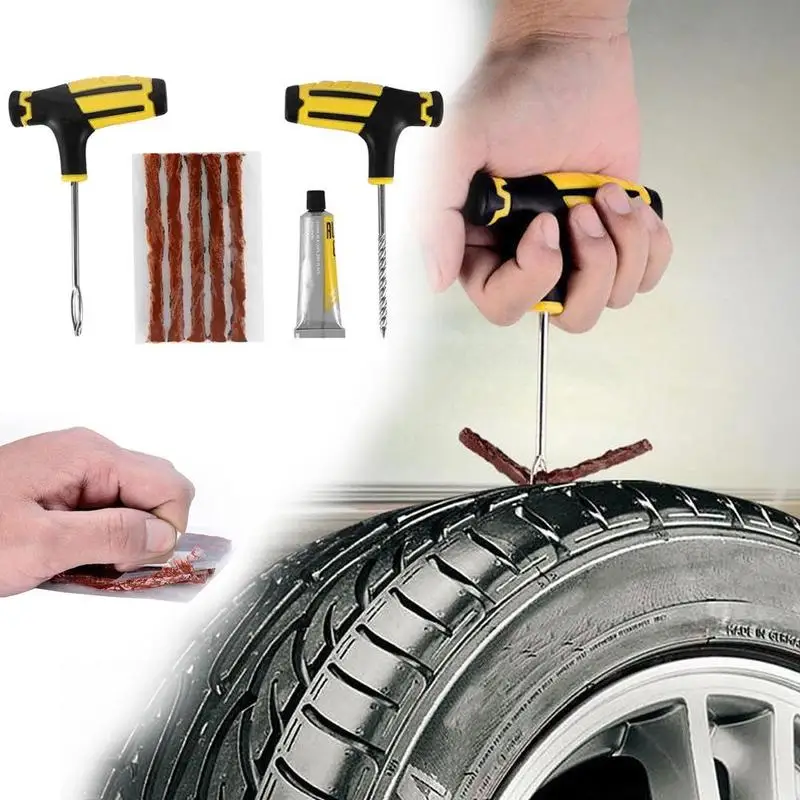
Here are some ways to help you better understand the plugging process.
Step 1: Locate the leakThis step does not require you to remove the wheel altogether, but you can use a jack to support the wheel’s weight, so it is pretty easy to do the following steps.

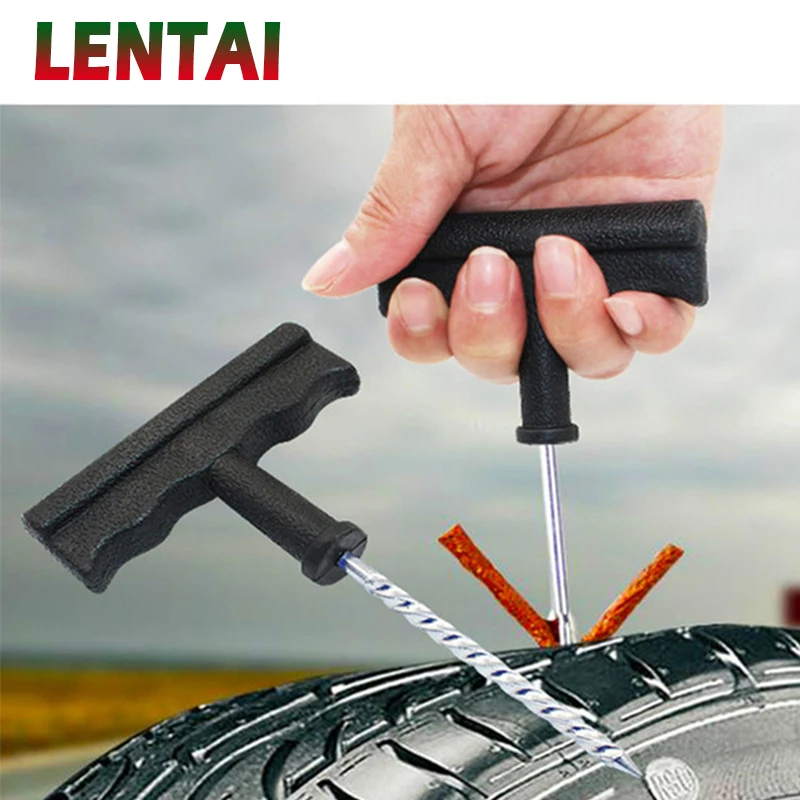
The above article has provided you with knowledge related to plugging or manipulations to perform this process. Hopefully, it will help you when you encounter a similar situation.
This post was last updated onI’ve heard that it’s not very safe to drive on a plugged tire.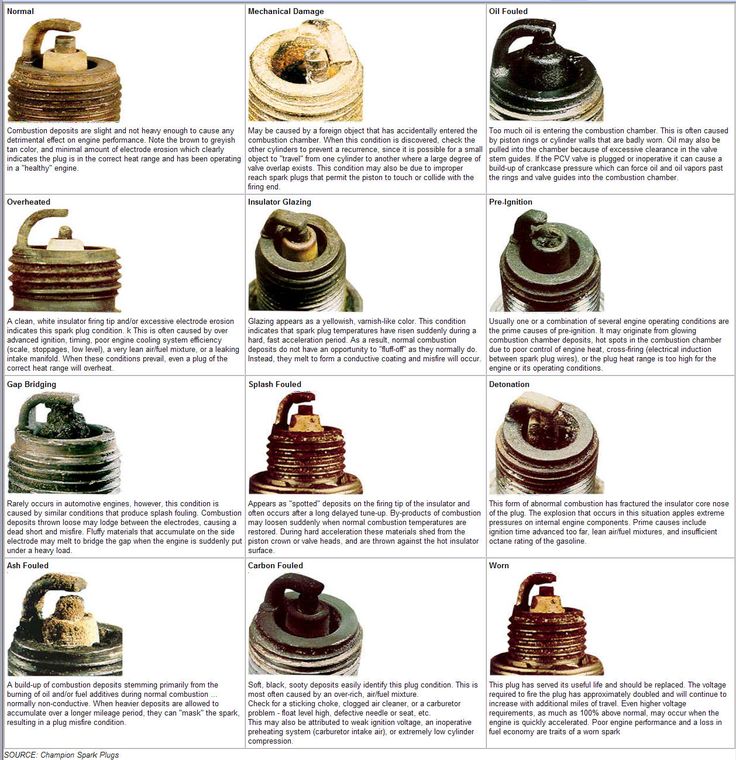 Is that true? Why is repairing or replacing a damaged tire a better option than plugging a tire? What are the dangers of driving on a plugged tire?
Is that true? Why is repairing or replacing a damaged tire a better option than plugging a tire? What are the dangers of driving on a plugged tire?
We’ve all been there before. You wake up or walk to your car after work, only to look down and see a flat tire and a nail sticking out. You don’t have time to take your vehicle into an auto shop and need a quick fix. It’s a small nail, so you plug your tire and go on with your life.
You only meant for the plug to be a temporary solution until you could get the tire replaced. Then life happens, and it’s a few days before you can get a new tire. Those few days turn into months, which can quickly turn into a year. You may start to ask yourself if it’s really safe to drive on a plugged tire.
It turns out that installing a plug can have a serious impact on the life and integrity of your tire. That is if it’s safe to plug your tire at all. Here is what you need to know about plugged tires and how safe it really is to drive on one.
The first thing you should consider when plugging a tire is if it’s safe to install a plug in the first place. There are specific cases when it’s safe to use a plug. Outside of these scenarios, driving on a plugged tire could be dangerous to you and other drivers.
Depending on the size of the puncture, the extent of the damage, and the tread of your tire, you may not be able to repair the tire with a plug. The size of the hole must be no larger than 0.25 inches and must be located on the tread of your tire. If the puncture is on the shoulder or sidewall, then you will need to replace the tire.
The angle of the puncture also makes a big difference in the effectiveness of a plug. Ideally, the nail or object that punctured your tire went straight in. This would make a repair fairly straightforward. However, if the tire was punctured at an angle, the plug will have a hard time completely sealing the punctured area. Take note of how the nail or screw looks and the angle that it entered the tire.
Take note of how the nail or screw looks and the angle that it entered the tire.
The age and quality of your tire is also an important factor in whether or not it can be plugged. If the tread on your tire has been worn below 2/32 of an inch, then your tread is too far gone to be plugged. If you’re wondering how you can measure this, 2/32 of an inch is the amount measured by the classic penny test. Make sure your tire passes the penny test before you even thinking of plugging it. If it doesn’t pass the test, then it’s probably time for a new set of tires anyway.
If you have to ask yourself whether or not your tire can be repaired, that may be a sign that it’s time to move on. A TIA-certified tire technician can inspect your tire and let you know for certain if it’s safe.
Another thing to think about when it comes to driving on a plugged tire is how your repair may impact the manufacturer’s warranty on your tire. Improper repair and maintenance is a surefire way to void your warranty.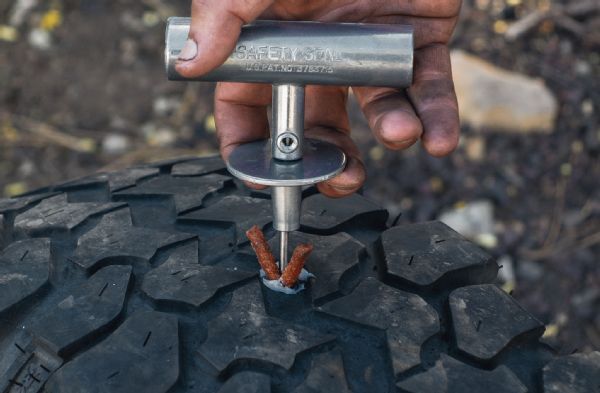 Think twice the next time you consider opting for a DIY approach on your next tire repair.
Think twice the next time you consider opting for a DIY approach on your next tire repair.
When it comes to the safety of your vehicle, it’s always best to leave things to the experts. By having your tire repaired by a certified professional, you can be confident your repair is performed properly, and your manufacturer warranty is still “good.”
The biggest problem with driving on a plugged tire is that you still have a hole in your tire! While it may be a temporary fix, it’s important to recognize that there is still a structural failure in your tire that needs to be addressed.
It only makes sense that a plugged tire cannot handle the same level of stress and strain as a tire in good condition. This is especially true when you start reaching higher speeds on the highway. The manufacturer won’t support a tire’s speed rating once it has been repaired. So, if you plan on racing, off-roading, or just want to go fast, a plugged tire isn’t going to work.
Over time, it’s possible for that small puncture to slowly get larger. This results in a greater loss of air while also increasing your chances of a blowout on a road. Furthermore, the plug itself may fail while you are driving, putting you back where you started.
In the event of a flat tire from a nail or screw, the best course of action is always to replace the tire. A plug or patch for your tire may help tide you over until you can have it replaced, but it’s important to remember that a plug is meant to be a temporary fix.
While it may be tempting to see how far you can get with a five-dollar repair, the consequences of a plugged tire failing will be much worse than if you had replaced the tire in the first place.
If you just purchased a tire or recently bought a set of expensive tires, it can be a frustrating experience. If this is the case and you hope the tire can be saved, it may be worth it to have it inspected by a professional.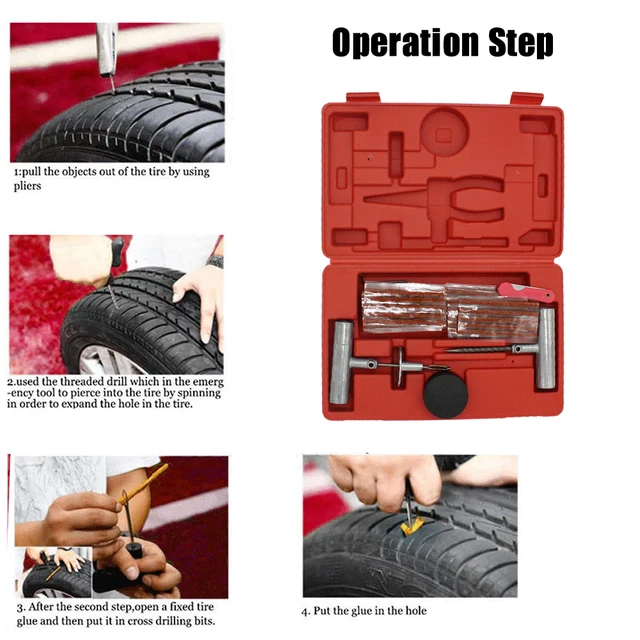
The TIA-certified tire experts at Tread Connection know how to properly diagnose, inspect, and repair flat tires. When you work with Tread Connection for your flat repair, the tire will be removed from the wheel and carefully inspected inside and out. This helps us ensure whether or not it can be safely repaired.
If the tire can be repaired, our team will take care of it for you. In the event that your tire cannot be safely repaired, our team will recommend a replacement from our wide range of tires to find the right one for your needs, and your budget.
It’s never worth it to gamble when it comes to the safety of you and your vehicle. Don’t try to see how long you can drive on that plugged tire. Have your tire inspected and repaired the right way by the TIA-certified tire experts at Tread Connection.
We bring the tire shop to you and can repair your flat or replace your tire at your home and on your schedule. Schedule your tire service with Tread Connection today!
Schedule your tire service with Tread Connection today!
BUY TIRES
When a wheel is punctured on the way, it is always a disaster for the driver. Especially if you don't have a spare. If you're determined to fix the tire yourself, you'll need to learn about wheel resuscitation beforehand. There are usually two of them - a plug and a patch. But how exactly to close a hole in a tire, read below.
Plugs are the cheapest and easiest tire repair option, making them ideal for roadside emergencies. It will take you a few minutes and a ready-made set of plugs to get the tire in order and back on the road. You won't even need to remove the tire from the wheel as all repairs are done from the outside.
The high quality plugs available on the market today can actually seal a puncture well, especially when you use a special vulcanizing agent to "bond" the plug material to the tire rubber. However, if the hole is close to the side wall, or if it is uneven, the plug may not close it completely. In these cases, this fix may only be a temporary measure.
However, if the hole is close to the side wall, or if it is uneven, the plug may not close it completely. In these cases, this fix may only be a temporary measure.
In addition, you must understand that when you drive, your tires heat up and the rubber expands. As good as the plug is, it has different chemical properties, so it won't heat up as much as the rest of the tire. Patches, unlike plugs, are applied from the inside of the tire, so it takes more time and effort. You may not be able to do this by simply parking on the side of the road. But in the end, patches are more reliable.
Soft light, rattan and carpets. How to return the style of the 70s to the interior in a modern way
Starting the day right: the main rules of a healthy breakfast are named
Residents of the Moscow region were given a choice which vaccine to get vaccinated against COVID-19
When your tire is safely removed from the wheel , you can proceed with its proper repair. First of all, you need to determine exactly where the hole is. This will be easy to do if the nail or whatever that pierced it is still there. In this case, you will need to put a piece of tape right under it. This way you won't lose the hole when the item is removed.
First of all, you need to determine exactly where the hole is. This will be easy to do if the nail or whatever that pierced it is still there. In this case, you will need to put a piece of tape right under it. This way you won't lose the hole when the item is removed.
Then take pliers and remove what caused the damage. In case there are no hole indicators, you will need to cover the tire with soapy water while it is still on the wheel. Then press it down a little and look for bubbles. Remember and mark where the hole is.
You can use different tools for this. If possible, use a low speed drill and a carbide cutter to widen the hole first from the outside and then from the inside. After that, carefully clean the area with a scraper and a special cleaning fluid. You need to remove all dirt and rubber particles.
You need to cover the pointy part of the mushroom spot with this and also cover the polished surface of the tire itself. Remove the plastic from the flat side of the patch. While the cement is still wet, push the pointed side of the patch through the hole and use pliers to adjust it properly.
Remove the plastic from the flat side of the patch. While the cement is still wet, push the pointed side of the patch through the hole and use pliers to adjust it properly.
We walk and lose weight: why walking is more important for weight loss than running
Larisa Guzeeva admitted that motherhood is the most unbearable for her
Fitness Trend: How 12-3-30 Workout Helps You Lose Weight
Be careful not to overstretch. The patch should not have dimples. Polish the area around. If you are able to do this, you can use a low power buffer to polish the patch and the surrounding area. However, be careful not to rub the inner lining!
Clean the area with cleaning fluid and cover everything with cement to seal every gap. Complete the procedure by applying a special repair sealant to the polished area. Put the tire back on and inflate it. Once the tire is inflated, take a pair of scissors or a knife and cut the plug flush with the tread.
If the tire manufacturer's safety regulations allow repairs, you'll be fine. Please note that this is only true if you have used the proper procedure to secure the puncture correctly. However, a patched tire should not be used for driving at high speeds for an extended period of time.
No matter how well a tire has been repaired, it will not perform at 100% of its original capacity. Keep this in mind and be careful on the road. And remember that not all tires are repairable. Sometimes you just need to admit that the damage is too great and replace the wheel.
You cannot repair a tire if:
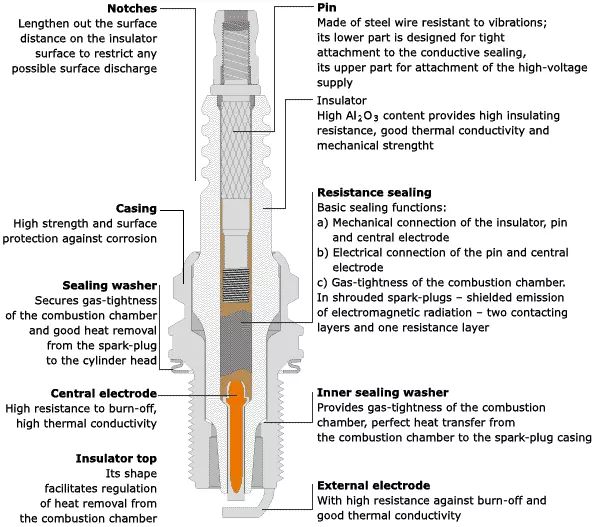 Side punctures cannot be repaired properly. Even if you patch the inside, the tire won't work 100% and soon it will leak again. Driving a car with a tire secured in this way is a big risk.
Side punctures cannot be repaired properly. Even if you patch the inside, the tire won't work 100% and soon it will leak again. Driving a car with a tire secured in this way is a big risk. Regardless of tire type, damage severity, etc., only a limited number of repairs are allowed. This information should be included in the manufacturer's recommendations. Remember that patches and plugs are a temporary measure and soon you will still have to replace the tire with a new one.
Found a violation? Complain about content
Author: Kirill Savchenko
“Chief, you've got ten minutes of work to do, the hole is nothing! Well, come up with something . .. ”Every tire fitter has probably heard such words. Alas, not all tire damage can be repaired ...
.. ”Every tire fitter has probably heard such words. Alas, not all tire damage can be repaired ...
But the situation can be reversed. A wheel pierced by protruding reinforcement may be repairable, while a small cut will write off the tire for scrap. Experienced tire fitters believe that it all depends on the point of damage and the object that caused it.
Most often, drivers encounter punctures in the tread area of a tire. It is not always possible to detect it immediately. If in the days of tires and chambers the wheel lost pressure at the slightest puncture, then tubeless tires are much more reliable in this regard. A nail or self-tapping screw usually closes the puncture site, preventing air from escaping quickly.
With such a “plug”, you can sometimes drive for months. The tire can lose pressure minimally without arousing suspicion. At the same time, an attempt to pull out a noticed nail on the way is likely to turn into a problem. In this case, the only recommendation is to pull out a foreign object only in a tire shop and repair the wheel.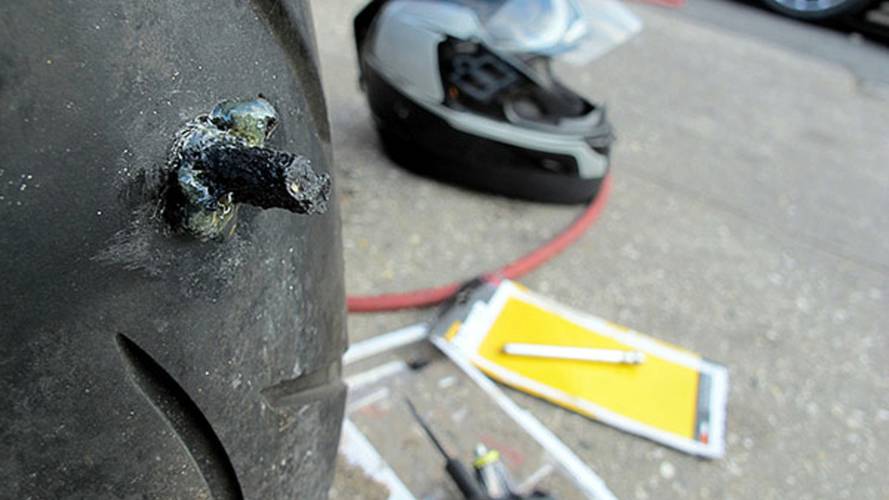
In most cases, tread punctures are sealed either with special harnesses (some for temporary use, some for permanent use) or patches from the inside of the tire. Even damage caused by massive pins can be repaired. The main thing is that a piece of the tire along with the cord is not torn out.
In the latter case, the hole is filled with raw rubber, vulcanized, and a special cord patch is placed on the inside. But this will only be a temporary measure. In addition, such repairs are not cheap, and purchasing a new tire can be both more profitable and safer.
In addition to the plaster, cord “fungi” are also used. Lubricated with glue, the “fungus” is inserted into the puncture from the inside of the tire, then the excess part of the “leg” is cut off from the outside.
On the other hand, a cord patch can seriously help with side cuts. And car owners meet with them quite often. But here there are several nuances. In a roadside tire shop, the cut will most likely not heal.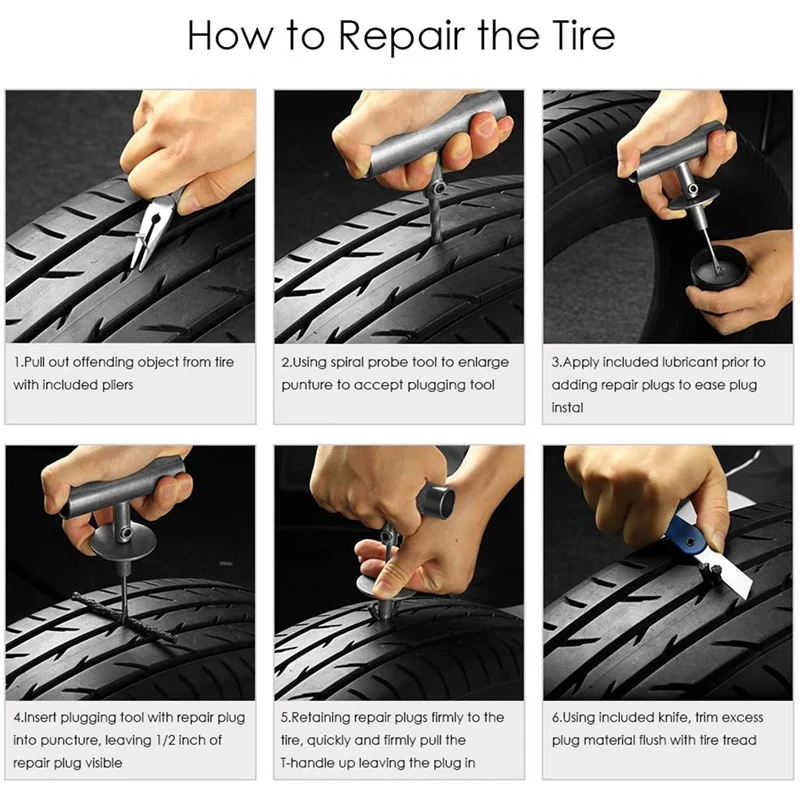 You need to contact a company with specialized equipment, primarily vulcanization.
You need to contact a company with specialized equipment, primarily vulcanization.
And one vulcanizer is indispensable here. Cord patches should be with a certain number of layers, designed for strictly defined damage sites and of a suitable size. And again we are talking about the nuances.
If the cut is in the shoulder area of the tire, then it is most often impossible to repair it qualitatively. The tire fitter who offered such a service is at great risk, even if he claims that he will weave a piece of new cord with his hands and vulcanize it. There are no miracles in this situation, but in any case, the last word belongs to an experienced specialist.
Side cuts on low profile tires with a tread height of less than 50% of the width are poorly treated. That is why, in the case of using a car on roads with a possibility of tire damage, it is better to put those that are higher. They are much easier and cheaper to repair.
By the way, an injury that looks like a cut at first glance may not be one. If the sidewall of the wheel catches on something sharp, and a tear forms on the tire without damaging the cord, then this is called a pinch. It does not carry momentary danger and does not require any complex repairs.
If the sidewall of the wheel catches on something sharp, and a tear forms on the tire without damaging the cord, then this is called a pinch. It does not carry momentary danger and does not require any complex repairs.
However, if a piece of rubber remains, then it is glued with ordinary superglue. If not, you will need raw rubber and a vulcanizer. It is impossible to leave the cord bare: under the influence of moisture, it can collapse, which will lead to the complete loss of the tire.
One of the most common and fatal tire defects is swelling or simply "herniation". Despite the absence of open damage to the rubber, such a wheel will be scrapped ahead of schedule. The fact is that when the sidewall is hit, the threads of the tire carcass break. Even if the swelling is very small, sooner or later the bump grows in size, and this is already fraught with an explosion of the wheel at speed.
However, some hernias can be repaired, but this is again a temporary measure. Masters can put cord patches even in the tread area. But only on condition that the distance from the sidewall to the swelling is more than 40 mm. If less, the tire is not subject to further operation. By the way, on low-profile tires, hernias, for the most part, are not repairable - both on the tread and on the sidewalls.
One of the major tire problems is caused by unprofessional repairs. Moreover, the owner most often does not know about it. We are talking about damage to the bead ring, as a result of which the tire does not initially hold the specified pressure.
Eventually the bead ring begins to push out of the rim. At high speed or under heavy load, such a wheel can be disassembled, which again threatens the car with a loss of control.
This damage can be repaired provided that the wire ring or base is not damaged. Special technologies for such repairs are not provided, but experienced craftsmen use the so-called "cold" or chemical vulcanization using a two-component sealant. The resulting mass covers places where there is no rubber on the bead ring. The main condition is to wait three days before mounting the tire on the disc.
The resulting mass covers places where there is no rubber on the bead ring. The main condition is to wait three days before mounting the tire on the disc.
As for Run Flat tires, according to the instructions of most manufacturers, they cannot be repaired. In extreme cases, you can use a bottle of special pressurized sealant that comes as a repair kit.
Comment of the expert of the company "SHINSERVICE":
Alexander Golubev
expert "SHINSERVICE"
First of all, we recall that most tire manufacturers do not recognize handicraft tire repair. It is considered a sign of external influence and changes in the design of the tire. Such a tire automatically voids the warranty. This does not happen if tire repairs are carried out in specialized, authorized tire brands services. Note that almost all major tire brands give their own extended warranty, according to which in most cases the repair is free, at a discount, or the product is generally replaced with a similar one, depending on the conditions of the program.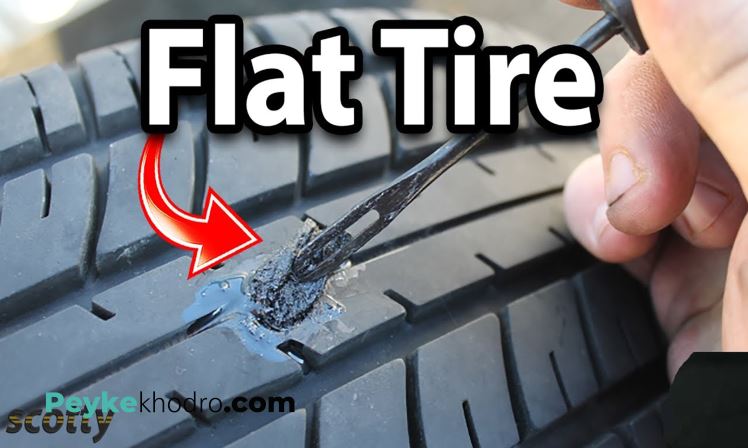
Based on our experience, we can say that in most cases damage in the bead area and in the shoulder area is not repairable.
I would also like to draw your attention to the fact that most low-profile tires have high speed indexes (V and above), and even after professional repair they will not be able to operate in the same modes without restrictions. Therefore, we strongly recommend changing the tire in all cases, except for tread punctures.
practice tires and wheels
Articles / History A 45-year-long holiday: we see off the Ford Fiesta, remembering its brightest achievements Fiesta for Ford is almost the same iconic model as, for example, Golf for Volkswagen. After all, for more than 45 years, more than 16 million copies of seven generations have been produced. Alas,... 505 2 0 03. 12.2022
12.2022
Articles / Exhibitions We should ride them: novelties of the international bus exhibition Busworld 2022 From November 29 to December 1, the international exhibition of buses Busworld 2022 was held in Moscow. Of course, MAN, Volvo, Scania and all others did not take part in this exhibition for obvious reasons... 1209 0 four 02.12.2022
Articles / Practice ATF, PSF and three different colors: what to fill in the hydraulic booster and what can be mixed Unfortunately, power steering fluid is usually remembered in two cases: when the pump is already dying and starting to howl, or if it has leaked somewhere. In a good way, of course, she also needs me . .. 904 one one 02.12.2022
.. 904 one one 02.12.2022
Test drives / Test drive Haval Dargo vs Mitsubishi Outlander: the dog is barking, the stranger is coming In the Haval dealership in the south of Moscow, life is in full swing: buyers look at cars, communicate with managers and sign some papers. While I was waiting for the test Dargo, the same cross... 18031 7 205 13.09.2022
Test drives / Test drive Motor from Mercedes, emblem from Renault, assembly from Dacia: test drive of the European Logan 1.0 It would seem that what's new can be told about the second generation Renault Logan, known to every Russian taxi driver, as they say, up and down? However, this car has.